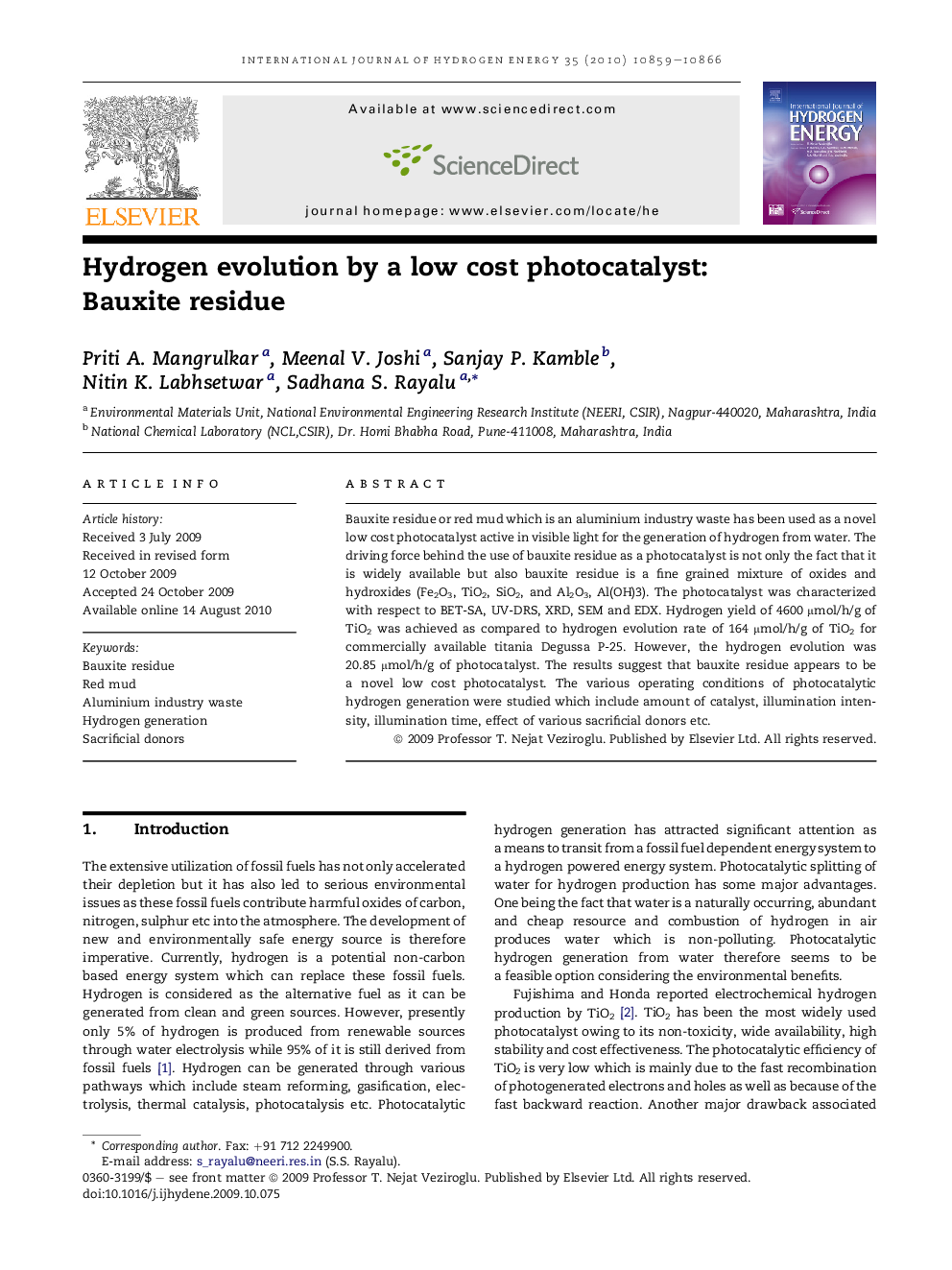| Article ID | Journal | Published Year | Pages | File Type |
|---|---|---|---|---|
| 1276681 | International Journal of Hydrogen Energy | 2010 | 8 Pages |
Bauxite residue or red mud which is an aluminium industry waste has been used as a novel low cost photocatalyst active in visible light for the generation of hydrogen from water. The driving force behind the use of bauxite residue as a photocatalyst is not only the fact that it is widely available but also bauxite residue is a fine grained mixture of oxides and hydroxides (Fe2O3, TiO2, SiO2, and Al2O3, Al(OH)3). The photocatalyst was characterized with respect to BET-SA, UV-DRS, XRD, SEM and EDX. Hydrogen yield of 4600 μmol/h/g of TiO2 was achieved as compared to hydrogen evolution rate of 164 μmol/h/g of TiO2 for commercially available titania Degussa P-25. However, the hydrogen evolution was 20.85 μmol/h/g of photocatalyst. The results suggest that bauxite residue appears to be a novel low cost photocatalyst. The various operating conditions of photocatalytic hydrogen generation were studied which include amount of catalyst, illumination intensity, illumination time, effect of various sacrificial donors etc.
